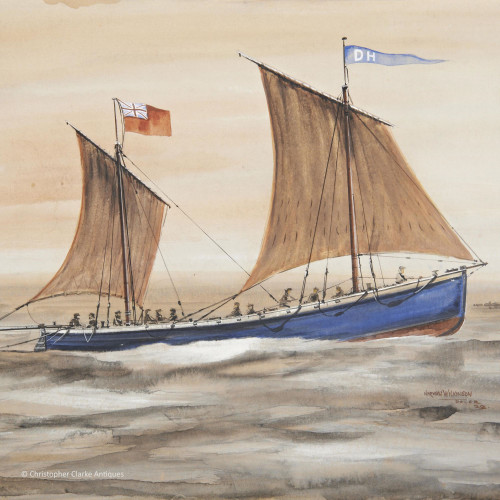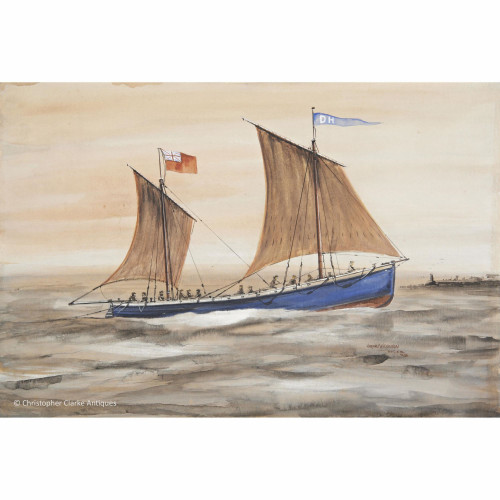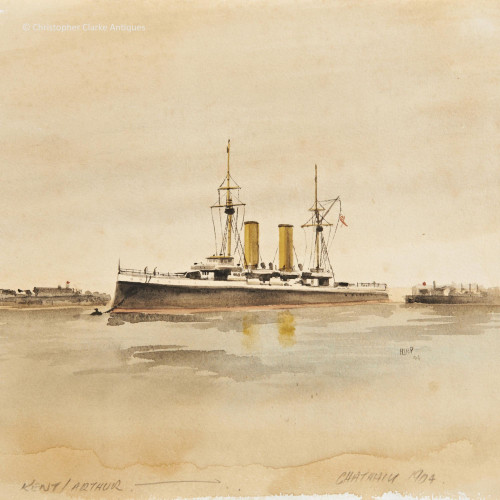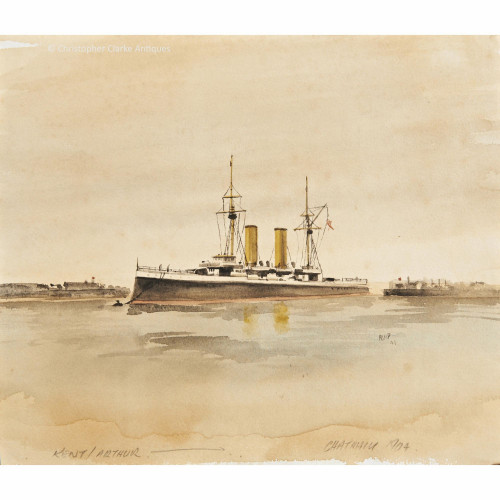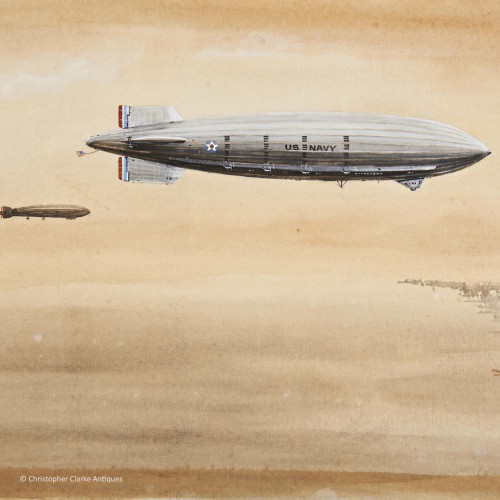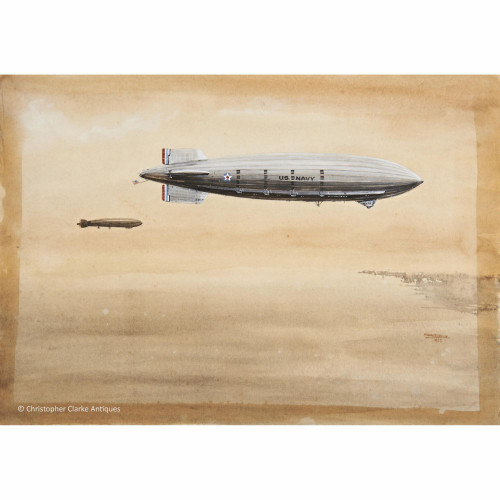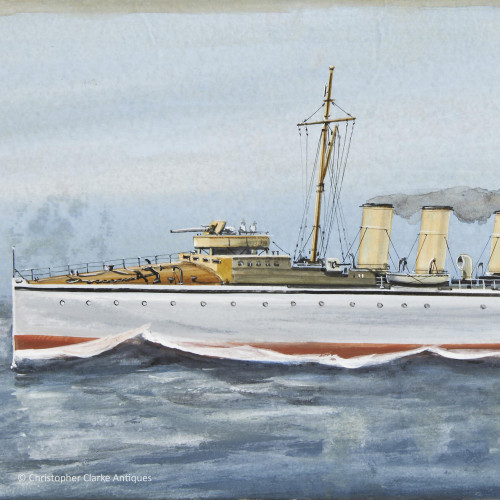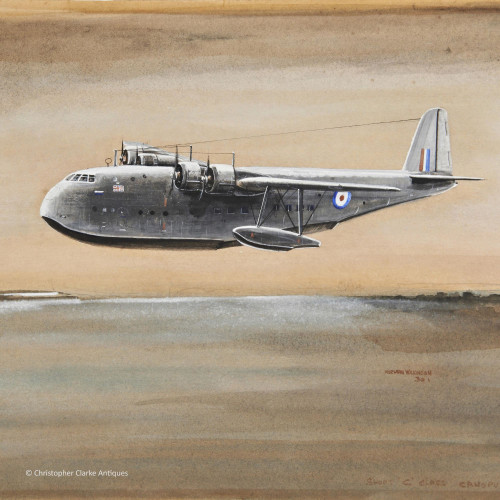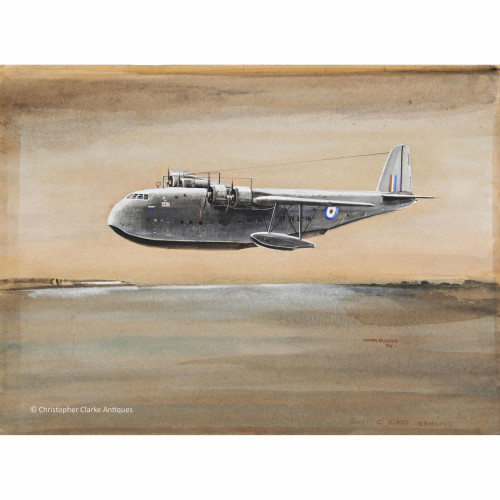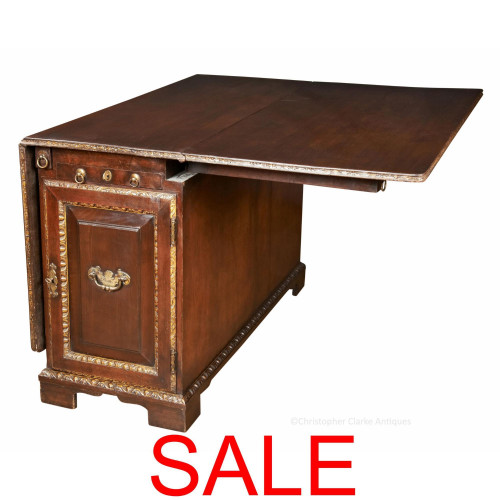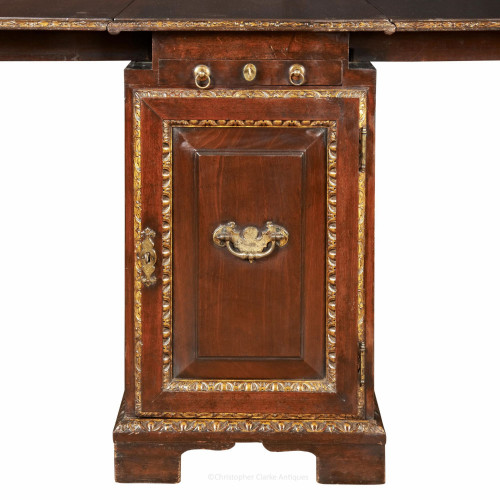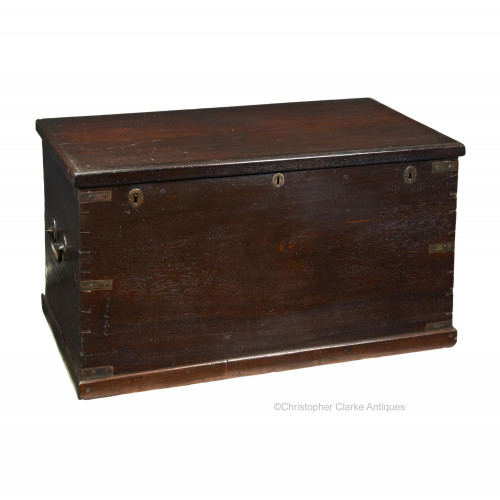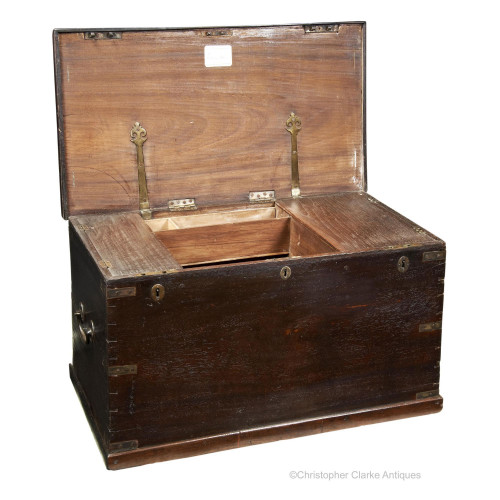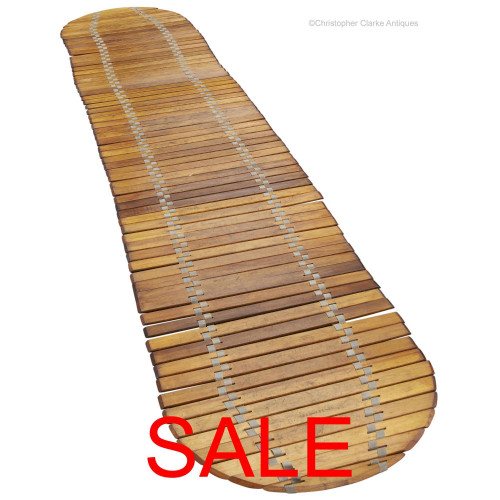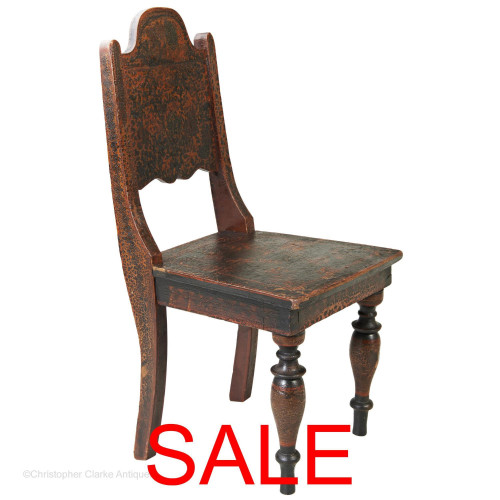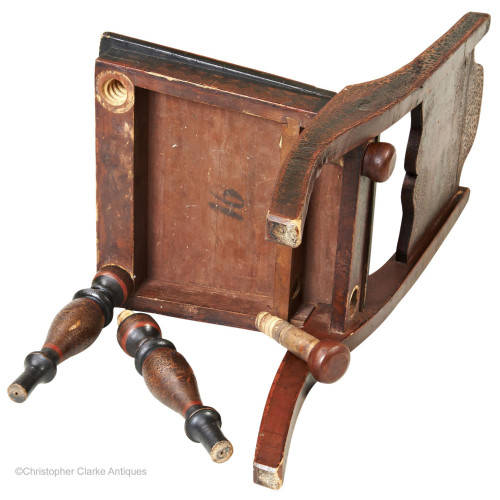Patent Ship's Chair by Cruikshanks
Patent Ship's Chair by Cruikshanks
83012
A mahogany and iron Ship's Chair with high, concave back.
The top half of this chair is mahogany and is more elegant that most Ship's chairs. The back has a good curve and the arms a good shape, terminating in a scroll. The centre of the back is made up of two Xs above a bar. By the nature of their construction, they have weak points and close examination shows their repairs and restoration.
The base is cast iron and has cabriole legs with a hoof foot. The legs are united by a cross stretcher with a central hole to bolt the chair down. This chair has a greater stability than most ship's chairs which partly rely on being bolted down. The padded, oil cloth seat is removable.
The patent refers to the sliding action of the seat which both turns and moves from front to back. These chairs were made to be used in dining rooms; the sitter had to be close enough to eat but also able to get their legs out from under the table. This problem was normally solved by making the chair revolving. Cruikshank's patent takes it a step further.
Cruikshanks were one of a number of Scottish cast foundries in the second half of the 19th century. The company was formed by Robert and Archibald Cruikshank in 1863 but needed an injection of capital four years later from Thomas Shanks, who became a partner, to survive. Their factory was the Denny Works, Glasgow Road, Denny, Stirlingshire. Although they produced a range of iron works from drainpipes to sewing machines, items for the local ship building industry was important to them. The company grew through the remainder of the century but by 1900 the Cruikshanks had become minority shareholders and were finally bought out by the Shanks family. In 1901 Cruikshanks became a limited company and continued to expand. The Great War brought both labour and materials problems and Government contracts, as it did for many. They survived that war and the next continuing until 1985.
This Ship's Chair stand out from most both for its patent action to the seat and for the unusual design to the back. Cruikshanks also made a chair with a similar base but with a shield back and no arms. We can date it to the very early 20th century from the addition of Ltd to the company name. Circa 1910.
Dimensions:
Circa 1910
Mahogany & Iron
Scotland
Cruikshanks
Ship's Furniture
RELATED ITEMS






